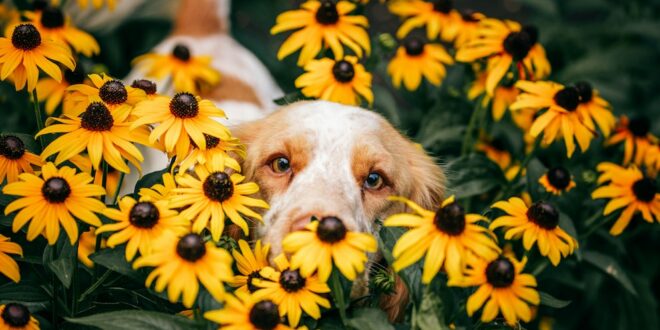Each year, much-loved domestic animals arrive at veterinary clinics with illnesses and injuries which didn’t need to happen. Many of these accidents and ailments are a direct result of gardens unsafe for pets. The good news is pets and gardens are compatible when you know what you’re doing. The following tips will help you get started in pet-proofing your own garden:
Security first
Most dog owners are familiar with fencing to keep their pooch in its own back yard (if you’re not, head over to the SPCA’ s site for helpful suggestions). But it’s our little pets that can be at risk if your garden perimeter isn’t secured. Rabbits are made for digging. Make sure their run has a chicken wire floor, and check it regularly for signs of deterioration. Let your rabbit out to play only when you’re supervising. Other small animals, such as chickens, are at risk from predators (such as stoats and native falcons) coming into your garden. Set stoat traps around your property where it is safe to do so, and lock your pets in a predator-proof hutch at night. Provide small pets with a run with a wire mesh floor, and keep within earshot when they are free-ranging.
Only organic
Going organic isn’t just good for your garden, its best for your pets, too. Steer away from chemical fertilizers which, if ingested by curious animals, can cause internal burns, vomiting, and breathing problems. Choose natural fertilizers such as animal manure, blood and bone, and kelp. Dig these ingredients into the garden to avoid your pet digging them up or rolling in them. If using lime, take extra care to bury it well down, as its alkalinity can irritate skin. If you need to lime your lawn, keep your pet off the area until the rain, or frequent sprinkling, has thoroughly washed the substance into the soil.
Pet-friendly pest treatments
Stick to pet-friendly pest treatments for your ailing plants. Place up-turned terracotta plant pots on your garden to create cool, damp spots that will lure in slugs and snails. Scrunch up brown paper and place it among your flowering plants to attract earwigs and other bud-chewers. Use pet friendly and effective soapy water spray to treat sap suckers. Net your garden to prevent white butterfly attack.
Out of reach edibles
Many of the edibles we like to grow in our gardens are safe for pets – but not at all stages of their growing. Ripe tomatoes, for instance, may not harm your dog, but green tomatoes, in sufficient quantity, will. Other edible favourites, such as those in the allium (onion family), can cause anaemia in your pooch. Check your sow-and-grow list thoroughly before planting, but better still, consider growing under-cover in a greenhouse or ‘pop-up’ garden cage. Purchase a screen door for your greenhouse that will allow for air to circulate while excluding pets. Secure pop-up enclosures by pegging them down with hoops of number 8 wire. Inspect them regularly for any damage that could allow your pet to gain entry.
Pretty high
We all enjoy colour in the garden. Keep your ornamentals pet-safe by growing in hanging baskets, or raised beds that your pet can’t reach (remember how far a cat can jump!). Better still, choose flowering plants that are non-toxic to animals. Roses, snapdragons, asters, cornflowers, sunflowers, and marigolds are all pet-friendly choices.
Compost
While you may be doing everything right when it comes to pet-safe sowing and growing, your compost can let you down because it will contain the scraps of produce you are buying in. The seeds and stones of fruit, for example, contain toxins, and a fruit stone can be as appealing to a dog as a bone. Use only an enclosed compost bin, peg it down securely to the ground, and remember to replace its lid after use. When using compost onto the ground, bury it deeply where it won’t be accessible to a digging pet.
Entertainment
While many pets will never touch your garden when content, a bored animal can get into all sorts of mischief. Make sure your pet has frequent walks (where applicable). Provide distractions such as toys and edible treats, and if you are not available to them during the day, consider a companion animal to keep them company.
Enjoy both a pet and a garden – but do your research to make sure they’re compatible.









Join the Discussion
Type out your comment here:
You must be logged in to post a comment.